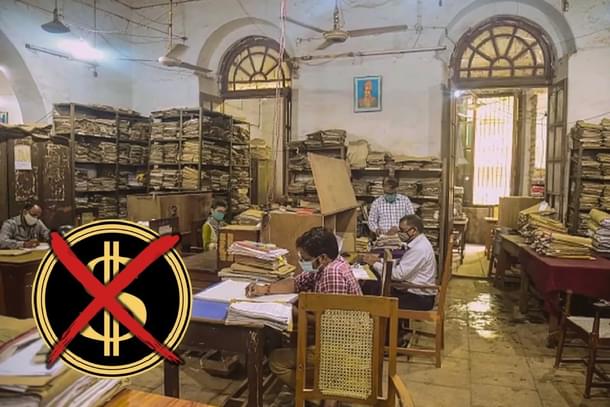Commentary
Why DOGE Is Not The Answer For India’s Government Efficiency Problems
Vansh Gupta
Mar 19, 2025, 06:19 PM | Updated Apr 02, 2025, 02:42 PM IST
Save & read from anywhere!
Bookmark stories for easy access on any device or the Swarajya app.


On 20 January 2025, United States (US) President Donald Trump signed an executive order establishing the Department of Government Efficiency (DOGE), an initiative championed by SpaceX CEO Elon Musk.
With a mission to slash excess regulations, cut wasteful spending, and restructure federal agencies, DOGE aims to deliver a leaner, more efficient US government. This move has sparked global intrigue, with social media abuzz about whether India’s Prime Minister Narendra Modi could adopt a similar model to tame the country’s sprawling bureaucracy.
Yet, a deeper dive into India’s governance landscape reveals a reality far removed from the context. India’s bureaucratic challenges stem not from overstaffing but from chronic understaffing, coupled with a suffocating web of regulations.
Copy-pasting DOGE—a model designed for a different beast—won’t address India’s unique inefficiencies. This article unpacks these differences to argue why India must chart its own path to governmental reform, building on existing efforts rather than importing a foreign fix.
What Is The US DOGE Model, And How Will It Work?
DOGE’s blueprint is straightforward: modernise federal IT systems, dismantle bureaucratic red tape, and shrink government size for greater efficiency. Nestled within the executive branch, it integrates the US Digital Service (rebranded as the US DOGE Service) to drive technological upgrades.
True to the spirit of its objective, DOGE itself is a temporary entity with only an 18-month lifespan—set to conclude on 4 July 2026.
India’s Governance Landscape: A Different Beast
India’s bureaucratic machinery, by contrast, tells a story of scarcity, not excess. The perception of an over-bloated system collapses under scrutiny.
IAS officer Srivatsa Krishna, writing in 2021 and citing the Institute of Conflict Management, pegged India’s government workforce at just 364 servants per 1,00,000 residents—45 per cent of whom are railway employees.
He broke it down further: 60 per cent occupy low-skill Group C roles, 30 per cent are in Group D, and only 7 per cent hold skilled Group A and B positions critical for policy and execution.
In contrast, the US, with 7,681 government servants per 1,00,000 residents, dwarfs India’s figures, exposing the myth of bureaucratic bloat.
This understaffing permeates key sectors. A 2016 NITI Aayog report by Bibek Debroy and Aparajita Gupta, titled, Old is Not Always Gold – A Case Study on Repealing Statutes' flags a dire shortage of qualified teachers and administrators in education. Rural schools often lack trained staff, contributing to dismal learning outcomes—students in some states struggle with basic literacy and numeracy despite increased enrollment.
This isn’t a case of too many hands; rather it’s too few to implement ambitious policies effectively.
Beyond education, the Indian Administrative Service (IAS)—the backbone of governance—faces crippling shortages.
According to a reply given in the Parliament in 2017, there was a shortage of 22 per cent in the number of IAS, IPS, and IFS officers in India.
Seven years later, the shortage still continued. According to data shared in the Parliament in December 2024, by MoS for Personnel, Public Grievances, and Pension, Jitendra Singh, 'there are 1,316 vacancies in the Indian Administrative Service (IAS) and 586 in the Indian Police Service (IPS). Note that these are vacancies at the sanctioned strength, which itself is far lower than what it should be for a country like India.
The judiciary paints an even bleaker picture. A 2022 Law Ministry report revealed India has just 21 judges per million people—far below the 50-100 recommended by global standards—resulting in a backlog of over 40 million cases. Justice delayed is justice denied, yet this crisis stems from understaffing, not excess bureaucracy.
The Indian Police Service (IPS) fares no better: according to the data compiled by the Department of Personnel & Training (DoPT) till 1 January 2024, there is a 11 per cent vacancy rate, with only 4,469 officers against a sanctioned 5,055.
India’s police-to-population ratio of 152 per 100,000 lags behind the UN’s recommended 222, overburdening forces and hampering law enforcement.
India’s Real Problem: Too Many Rules, Not Enough People To Enforce Them
The priority for India thus is not shedding government personnel but “rightsizing”—bolstering skilled technocrats and generalists while dismantling the regulatory maze that strangles efficiency.
India’s bureaucracy isn’t drowning in people; it’s choking on process. On this count, the Modi government deserves credit for spending a decade chipping away at this problem.
A Decade of Incremental Red Tape Reduction
Since taking office in May 2014, the Modi administration has repealed nearly 2,000 obsolete laws. Early efforts in 2015 axed 125 archaic statutes.
By February 2025, the 1961 Income Tax Act was replaced with a modern framework, cutting its length from 800 pages to 622 and halving its word count from 5,00,000 to 2,50,000.
Some states have mirrored these efforts. In 2018, Uttar Pradesh scrapped 1,000 colonial-era laws, some over 150 years old, covering outdated taxes and governance structures. Odisha’s Chief Minister Mohan Majhi, on 8 November 2024, pledged to bin irrelevant laws, building on the prior BJD government’s repeal of 206 statutes. Karnataka’s 2020 repeal of 163 laws from princely-state eras streamlined its administrative framework.
Digital and Administrative Reforms
Beyond deregulation, India’s reforms leverage technology and process optimisation. Let's have a look over certain measures as highlighted in the report titled, "Administrative Reforms — Lessons and Experiences 2019-2023" compiled by V. Srinivas, who is currently serving as a Secretary to the Government of India in, among other departments, the Department of Administrative Reforms.
--The e-Office 7.0 platform, rolled out across 75 ministries, has achieved 89 per cent paperless file handling, slashing administrative clutter.
--Digital India initiatives like UMANG—with over 5 crore downloads since 2017—integrate 1,900+ services, while One-Nation One-Ration Card has enabled over 100 crore portability transactions since its launch. Passport Sewa Kendras have cut processing times, enhancing citizen access.
Administrative tweaks amplify these gains:
- File processing levels dropped from 7-8 to a maximum of four,
- delegation of powers to lower officers sped up approvals, and
- Special Campaign 2.0 weeded out 37.5 lakh files, freeing 89.5 lakh square feet of office space and generating Rs 370.1 crore from scrap disposal.
- The Centralized Public Grievance Redressal and Monitoring System (CPGRAMS) resolved 1.5 million of 1.8 million grievances in 2022, slashing response times from 32 days in 2021 to 19 days in 2023.
--The National e-Governance Service Delivery Assessment (NeSDA) 2021 reported a 60 per cent growth in e-services from 2019 to 2021, with 74 per cent citizen satisfaction. This tech-driven shift suggests modernising without adding bureaucratic layers.
Why DOGE Won’t Work Here
DOGE focusses on overstaffing—a US-centric problem—but India's issues are different. India’s bureaucracy is low on number but high on regulatory power and penalising power. The numbers have to be increased and power has to be decreased.
The US can afford to trim fat; India needs to build muscle—more skilled staff, simpler processes, and deeper digitalisation.
The Modi government’s decade-long reforms—2,000 laws repealed, e-services expanded, and administrative bottlenecks eased—offer a blueprint. While DOGE has to run an 18-month sprint, India’s challenges demand sustained, incremental change, not a quick purge.
From understaffed courts to overstretched police and doctors, the data screams understaffing, not excess. Scaling existing efforts—hiring specialists, streamlining rules, and perfecting execution—beats importing a mismatched model.
Vansh Gupta is an Editorial Associate at Swarajya.




